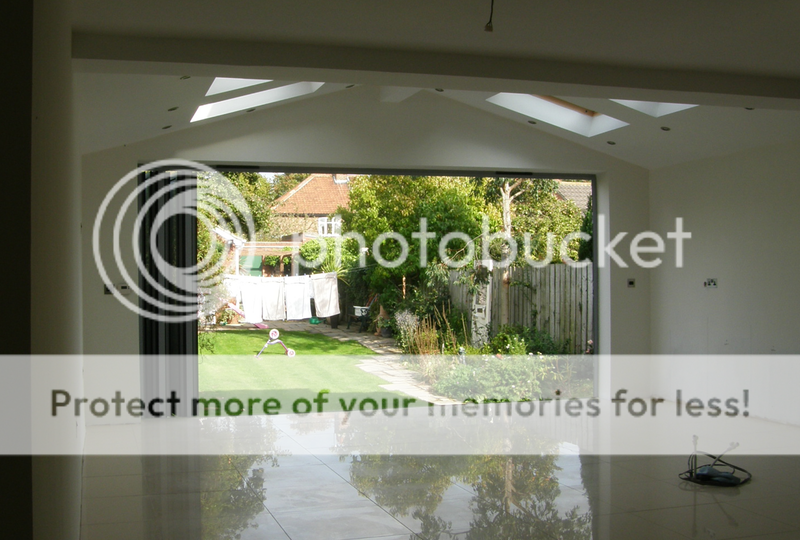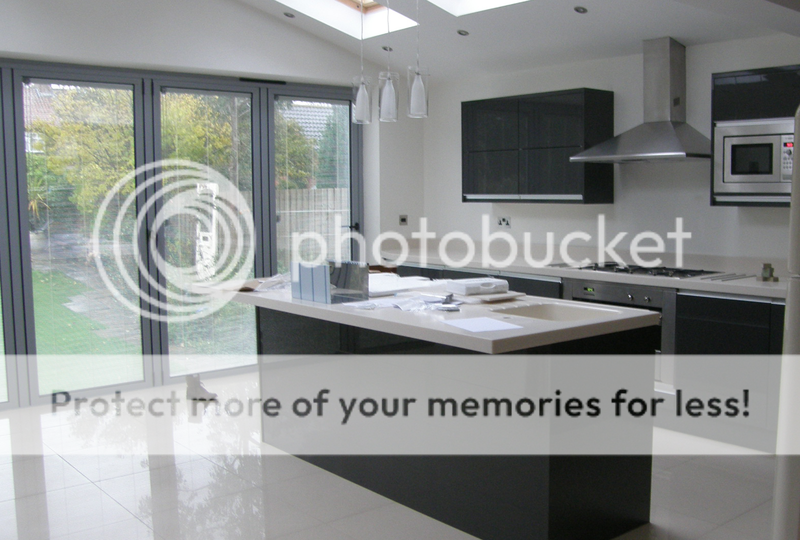please do not duplicate your threads
Hi,
Have a bit of a dilemma concerning my kitchen floor and would be interested in any comments.
The first picture shows our extension just after completion in early 2011, the floor was fully tiled prior to the kitchen being installed. Rightly or wrongly it was done in this order due to lead time on kitchen and availability of tiler.
The second picture shows the kitchen installed.
To the untrained eye the room still looks the same however I have a number of floor tiles in the space which have become unstable. When I say unstable I haven’t lifted any yet but you can feel and hear movement underfoot.
The extension was built right across the rear of the house and opens up into the original rear sitting room. The floor in the new part is block and beam construction complete with 100mm insulation and 60mm screed. I believe the screed was not perfectly level when applied and the tiler had to apply some self-levelling compound which could be where I'm seeing loose tiles?
The floor in the original part of the house remained untouched and is traditional joists with a 12mm marine ply covering. In here the problem is more apparent and I believe the floor simply has too much spring in it. No expansion joint was placed between the two areas either!
Both floors have a wet UFH system installed.
What I would really like to do is lift all the tiles and re-tile. The biggest issues I can see is
that the whole extension was tiled prior to the kitchen and island being installed on top. Dismantling the kitchen fills me with dread.
The whole space old and new measures 52 square meters.
I guess what I’m asking is “what would you do” ?


Have a bit of a dilemma concerning my kitchen floor and would be interested in any comments.
The first picture shows our extension just after completion in early 2011, the floor was fully tiled prior to the kitchen being installed. Rightly or wrongly it was done in this order due to lead time on kitchen and availability of tiler.
The second picture shows the kitchen installed.
To the untrained eye the room still looks the same however I have a number of floor tiles in the space which have become unstable. When I say unstable I haven’t lifted any yet but you can feel and hear movement underfoot.
The extension was built right across the rear of the house and opens up into the original rear sitting room. The floor in the new part is block and beam construction complete with 100mm insulation and 60mm screed. I believe the screed was not perfectly level when applied and the tiler had to apply some self-levelling compound which could be where I'm seeing loose tiles?
The floor in the original part of the house remained untouched and is traditional joists with a 12mm marine ply covering. In here the problem is more apparent and I believe the floor simply has too much spring in it. No expansion joint was placed between the two areas either!
Both floors have a wet UFH system installed.
What I would really like to do is lift all the tiles and re-tile. The biggest issues I can see is
that the whole extension was tiled prior to the kitchen and island being installed on top. Dismantling the kitchen fills me with dread.
The whole space old and new measures 52 square meters.
I guess what I’m asking is “what would you do” ?



